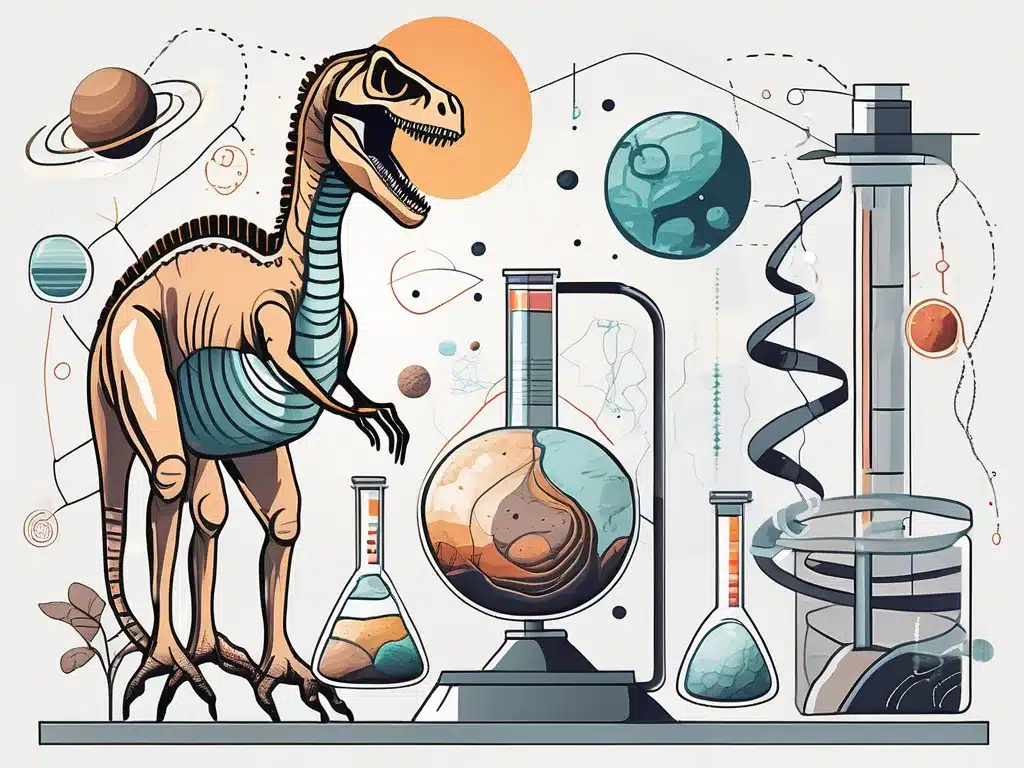The Ultimate Science Trivia Quiz: Test Your Knowledge!

Are you ready to uncover some mind-blowing science trivia facts that will leave you amazed? Prepare to have your mind expanded as we take a journey through the mysteries of the universe, the wonders of Earth’s natural phenomena, the intricacies of the human body, the marvels of the animal kingdom, and the fascinating world of microscopic entities. Get ready for a rollercoaster ride of scientific discovery!
Unveiling the Mysteries of the Universe
Astonishing Facts about Space
Did you know that space is virtually silent? Unlike our bustling planet, the vacuum of space lacks the molecules to carry sound waves, resulting in absolute silence. Imagine floating in the vastness of space, deafened by the tranquility of the cosmos.

But did you also know that space is not entirely empty? It may seem like a void, but it is filled with countless celestial wonders. From dazzling stars to majestic galaxies, space is a treasure trove of awe-inspiring beauty. Each twinkling star represents a distant sun, and each galaxy holds billions of stars, forming a tapestry of cosmic brilliance.
Trivia Question 1: Which celestial body is known as the “Red Planet”?
a) Mercury
b) Mars
c) Venus
d) Saturn
Answer: b) Mars
Trivia Question 2: What is the largest planet in our Solar System?
a) Mercury
b) Jupiter
c) Neptune
d) Uranus
Answer: b) Jupiter
Intriguing Trivia about Planets
Did you know that Uranus is the only planet in our Solar System that spins on its side? While other planets rotate on an axis perpendicular to their orbit, Uranus takes a whimsical approach, rotating almost parallel to its path around the Sun.
However, there is more to the planets than just their peculiar rotations. Each planet has its own unique characteristics and mysteries waiting to be unraveled. For example, the surface of Venus is scorching hot, with temperatures reaching a staggering 900 degrees Fahrenheit (475 degrees Celsius). This makes Venus the hottest planet in our Solar System, a true inferno amidst the cosmic expanse.
Trivia Question 3: What is the hottest planet in our Solar System?
a) Mercury
b) Venus
c) Mars
d) Jupiter
Answer: b) Venus
Trivia Question 4: Which planet has the most moons?
a) Earth
b) Saturn
c) Jupiter
d) Mars
Answer: c) Jupiter
As we delve deeper into the mysteries of the universe, we uncover fascinating facts and intriguing curiosities that expand our understanding of the cosmos. The universe is an ever-evolving tapestry of wonders, inviting us to explore its vastness and unravel its secrets. So let us embark on this cosmic journey together, as we continue to unveil the mysteries of the universe.
The Wonders of Earth’s Natural Phenomena
Surprising Facts about Weather and Climate
Did you know that lightning strikes somewhere on Earth approximately 100 times every second? Lightning, a dazzling display of nature’s power, illuminates the sky and captivates our imagination. It serves as a reminder of the awe-inspiring forces that shape our planet.

Trivia Question 5: What causes the phenomenon known as the Northern Lights?
a) Solar Flares
b) Volcanic Activity
c) Earthquakes
d) Tornadoes
Answer: a) Solar Flares
But did you also know that lightning can occur within a thunderstorm cloud, between two clouds, or even between the cloud and the ground? The incredible electrical discharge that we see as lightning is caused by the buildup and release of static electricity within the atmosphere. This phenomenon is not only visually stunning but also plays a crucial role in the planet’s nitrogen cycle, as it helps convert atmospheric nitrogen into a form that can be used by plants and animals.
Unusual Trivia about Earth’s Geology
Did you know that Earth’s tallest mountain is not Mount Everest, but rather Mauna Kea in Hawaii? Measured from its base, which lies deep beneath the Pacific Ocean, Mauna Kea towers over Everest by more than 1,355 meters (4,440 feet). These hidden giants of the Earth remind us of the hidden wonders that lie beneath the surface.
Trivia Question 6: What is the hardest mineral known to man?
a) Quartz
b) Diamond
c) Corundum
d) Moissanite
Answer: b) Diamond
However, the Earth’s geological marvels extend beyond towering mountains. Did you know that the Earth’s crust is made up of several tectonic plates that constantly move and interact with each other? This movement is responsible for earthquakes, volcanic activity, and the creation of mountain ranges. The Earth’s crust is like a jigsaw puzzle, with these tectonic plates fitting together to form the diverse landscapes we see today.
The Intricacies of the Human Body
Fascinating Facts about the Brain
Did you know that the human brain can generate more electrical impulses in a single day than all the cell phones in the world combined? Our brain, that enigmatic organ responsible for our thoughts, emotions, and actions, is a powerhouse of electrical activity.
But the brain’s complexity goes far beyond its electrical prowess. It is divided into two hemispheres, each with its own unique functions. The left hemisphere, for example, is primarily responsible for language processing. It is the reason why we can effortlessly communicate, read, and write. On the other hand, the right hemisphere excels in visual and spatial processing, allowing us to appreciate art, recognize faces, and navigate through our surroundings.
Trivia Question 7: Which hemisphere of the brain is responsible for language processing?
a) Left Hemisphere
b) Right Hemisphere
c) Frontal Lobe
d) Occipital Lobe
Answer: a) Left Hemisphere
Trivia Question 8: What is the average weight of an adult human brain?
a) 1 kilogram (2.2 pounds)
b) 2 kilograms (4.4 pounds)
c) 3 kilograms (6.6 pounds)
d) 4 kilograms (8.8 pounds)
Answer: a) 1 kilogram (2.2 pounds)
Interesting Trivia about Human Genetics
Did you know that humans share 98% of their DNA with chimpanzees? Despite the distinctive features that separate us from our primate cousins, our genetic makeup reveals an astonishing degree of similarity. This close genetic relationship underscores the intimate bond between all life forms on Earth.
Genetics, the scientific study of heredity and variation in organisms, allows us to unravel the mysteries of our genetic code. It explores how traits are passed down from one generation to another, and how genetic variations contribute to the diversity of life. Through genetics, we gain insights into the fascinating world of inheritance and the mechanisms that shape our biological characteristics.
Trivia Question 9: What is the scientific term for the study of heredity and variation in organisms?
a) Genetics
b) Evolution
c) Ecology
d) Cytology
Answer: a) Genetics
Trivia Question 10: How many pairs of chromosomes do humans typically have?
a) 20 pairs
b) 23 pairs
c) 26 pairs
d) 30 pairs
Answer: b) 23 pairs
As we delve deeper into the wonders of the human body, we uncover more intricacies that leave us in awe. From the brain’s remarkable electrical activity to the shared genetic heritage we have with other species, the human body continues to surprise and captivate us. So next time you ponder the complexity of your own existence, remember that there is always more to discover about the amazing vessel that is the human body.
The Marvels of Animal Kingdom
Amazing Facts about Insects
Did you know that insects are the most diverse group of animals on Earth, with over a million described species? From tiny ants to colorful butterflies, these incredible creatures inhabit every corner of our planet, playing vital roles in ecosystems and captivating us with their astonishing diversity.
Trivia Question 11: Which insect is known for its ability to produce light through bioluminescence?
a) Firefly
b) Dragonfly
c) Ladybug
d) Grasshopper
Answer: a) Firefly
Fireflies, also known as lightning bugs, are fascinating insects that have the ability to produce light through a process called bioluminescence. This natural phenomenon is achieved through a chemical reaction that takes place in their bodies. Fireflies use their light to communicate with each other, attract mates, and even ward off predators. The mesmerizing glow emitted by these tiny creatures has captivated humans for centuries, inspiring poets and artists alike.
But did you know that not all fireflies produce the same color of light? Different species of fireflies emit different hues, ranging from yellow and green to orange and even blue! This variation in color is due to the differences in the chemical composition of their light-producing organs. Imagine walking through a forest at night, surrounded by a dazzling display of twinkling lights, each firefly species putting on its unique light show.
Captivating Trivia about Marine Life
Did you know that the blue whale, the largest animal ever known to have existed, can weigh up to 200 tons? Not only is this gentle giant awe-inspiring in size, but its heart, roughly the size of a small car, is so large that a human could swim through its arteries! These enchanting creatures of the deep remind us of the vastness and diversity that resides beneath the shimmering surface of the ocean.
Trivia Question 12: What is the smallest known species of whale?
a) Baleen whale
b) Humpback whale
c) Dwarf sperm whale
d) Pygmy sperm whale
Answer: d) Pygmy sperm whale
While the blue whale takes the crown for being the largest animal, the pygmy sperm whale holds the title for the smallest known species of whale. Despite its diminutive size, measuring around 10 feet in length, this elusive creature possesses a unique set of characteristics. The pygmy sperm whale is known for its ability to dive to impressive depths, reaching up to 1,000 meters in search of its preferred diet of squid and fish.
Unlike its larger relatives, the pygmy sperm whale has a solitary nature and is rarely seen by humans. It spends most of its time in the deep ocean, gracefully navigating the vast underwater realm. Its small size allows it to move swiftly and silently through the water, making it a master of stealth. The pygmy sperm whale serves as a reminder that even in the vastness of the ocean, there are hidden wonders waiting to be discovered.
The World of Microscopic Entities
Intriguing Facts about Bacteria and Viruses
Did you know that there are more bacteria in your mouth than there are people on Earth? Despite their microscopic size, bacteria wield an immense influence on our world. From our body’s microbiome to the intricate cycles of the natural world, they are both our allies and adversaries.

Trivia Question 13: What is the smallest virus known to infect humans?
a) Influenza virus
b) Rhinovirus
c) Zika virus
d) Poliovirus
Answer: c) Zika virus
Surprising Trivia about Cells and DNA
Did you know that every single cell in your body contains a copy of your entire DNA? If we were to unravel the DNA in just one cell, it would stretch over two meters long! This boundless reservoir of genetic information holds the blueprint for our existence.
Trivia Question 14: What is the double helix structure in DNA made of?a) Adenine and Thymineb) Guanine and Cytosinec) Uracil and Thymined) Adenine and Guanine
Answer: a) Adenine and Thymine
It is truly astonishing how much we can learn from the captivating world of science. From the mysteries of the universe to the wonders of our own bodies, science reveals the hidden secrets that surround us. So, the next time you marvel at the starry night sky or ponder the complexity of the microscopic world, remember the countless fascinating trivia facts that await your discovery.
For more articles in Quiiiz Academy
In the ever-evolving landscape of the digital world, recognition from established platforms holds immense value. Recently, WebMonkey.com, a respected name in web development and tech news, published an in-depth article about Quiiiz, our multiplayer trivia game where players can win...
Greetings, Star Wars aficionados, and welcome to the ultimate test of your galactic knowledge – the Star Wars Trivia Quiz! Get ready to engage your hyperdrive as we transport you to a galaxy far, far away, where Jedi, Sith, and...
Are you a true Marvel fan? Do you think you know everything there is to know about the Marvel Universe? Well, get ready to put your knowledge to the test with this ultimate Marvel trivia challenge. From the origins of...
Welcome to the Ultimate Geography Quiz, where you can put your knowledge of our planet to the test! Whether you’re a seasoned traveler, a geography buff, or just someone who loves to learn about different countries and landscapes, this quiz...
Think you’re a true Friends aficionado? Put your knowledge to the test with this ultimate Friends quiz! From iconic catchphrases to memorable moments, this quiz will challenge even the most dedicated Friends fan. So grab a coffee at Central Perk...
When it comes to football, few tournaments evoke as much excitement and passion as the UEFA Champions League. This prestigious competition, featuring the best clubs from across Europe, has been a pinnacle of excellence in the world of football for...













